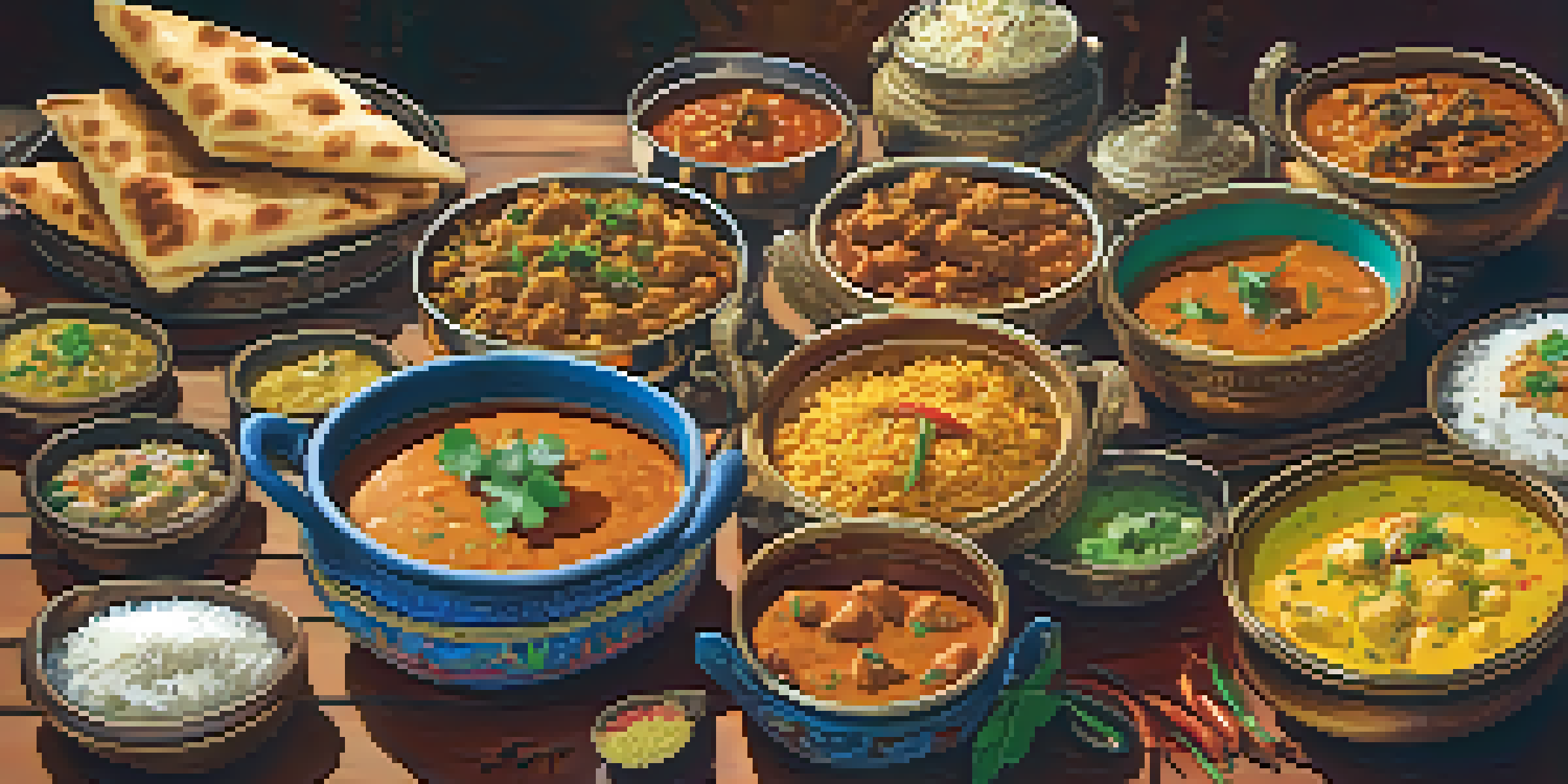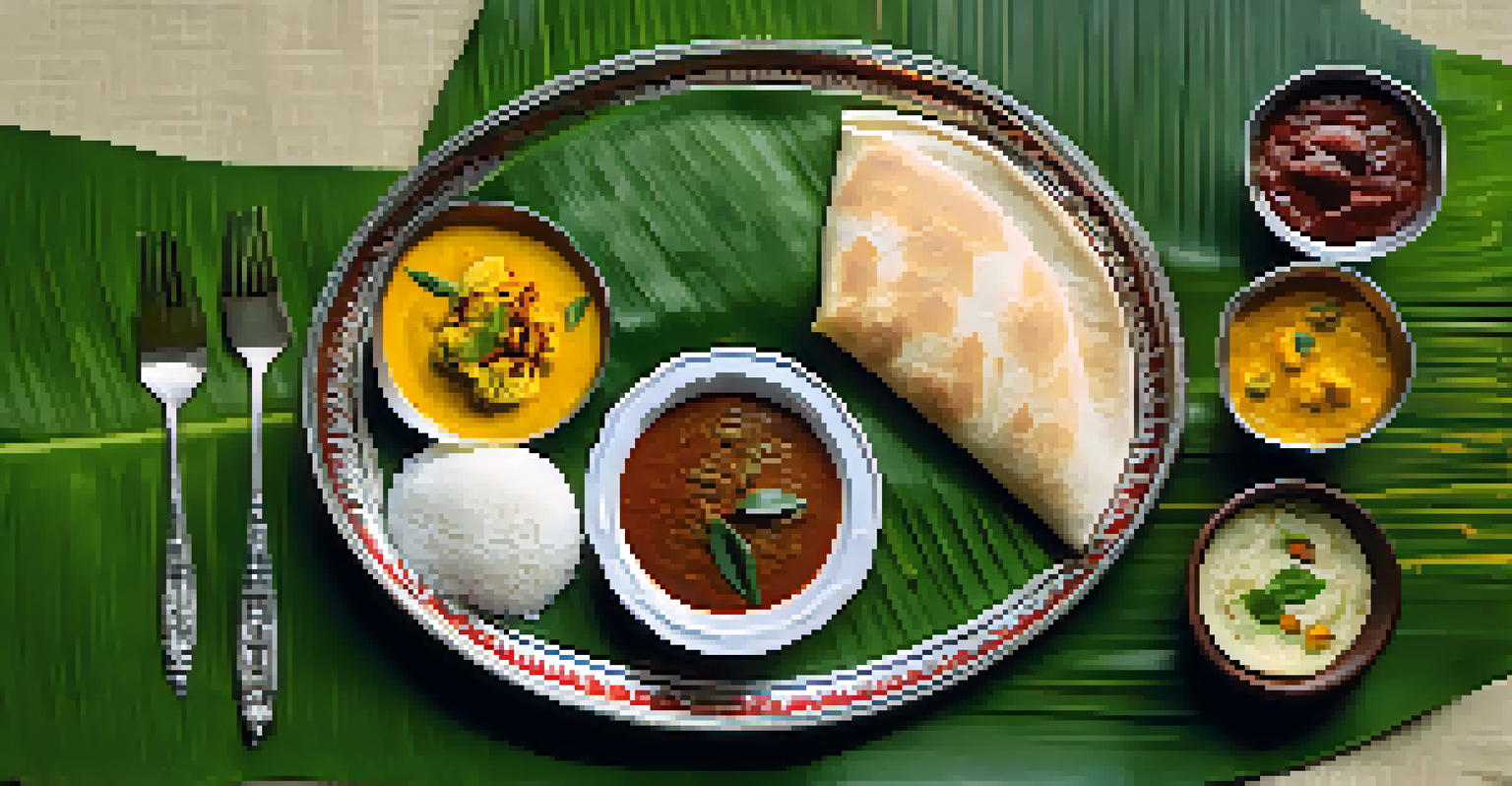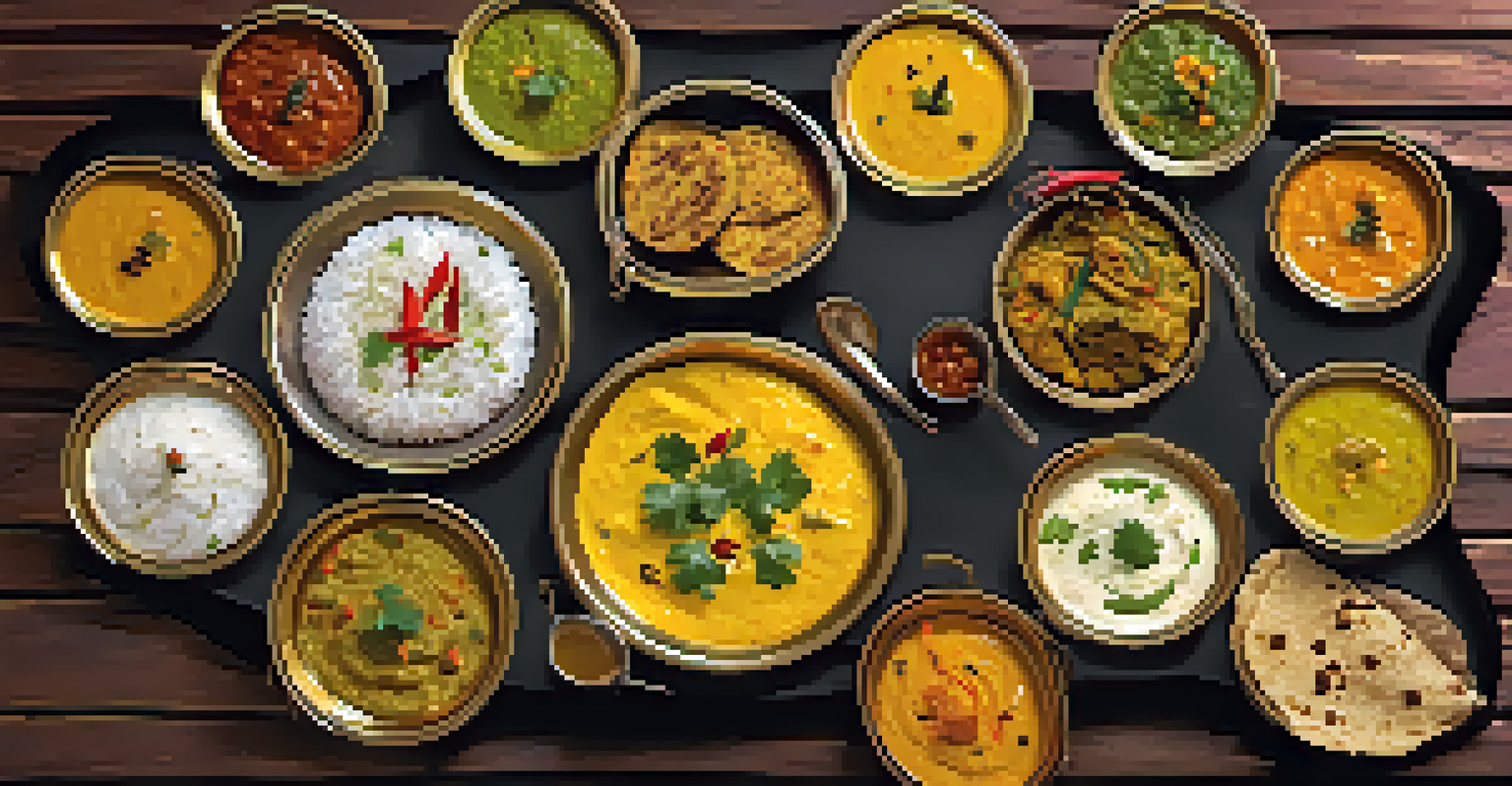Taste of Tradition: Exploring India's Regional Food Heritage

The Culinary Mosaic: An Overview of Indian Cuisine
India's culinary heritage is a vibrant mosaic, with each region offering unique flavors and cooking techniques. From the spicy curries of the South to the rich gravies of the North, every dish tells a story. This diversity is not just about ingredients; it's also about culture, climate, and history molding the food landscape.
Cooking is like love. It should be entered into with abandon or not at all.
For instance, in Punjab, the use of dairy products like paneer and ghee reflects the agricultural abundance of the region. Meanwhile, in Kerala, coconut and seafood take center stage, showcasing the state's coastal geography. This regional variation makes exploring Indian cuisine a delightful journey through time and space.
As we delve deeper into each state, we'll uncover how local traditions and festivals influence the dishes people prepare, creating a rich tapestry that is both diverse and unifying. Each plate serves as a reminder of the culture and heritage that shaped it.
Northern Delights: The Legacy of North Indian Cuisine
North Indian cuisine is characterized by its hearty ingredients and robust flavors, often featuring wheat-based breads like naan and roti. Dishes such as butter chicken and biryani have gained global popularity, but there’s much more beneath the surface. Traditional cooking methods, like tandoor baking, add a unique touch to these dishes that simply cannot be replicated.

The influence of Mughal cuisine is evident in the richness of North Indian dishes, where spices and cooking techniques were refined over centuries. Festivals like Diwali often see families gathering to prepare elaborate meals, passing down recipes from generation to generation. This shared experience not only nourishes the body but also strengthens familial bonds.
Diverse Flavors Across Regions
Indian cuisine is a rich tapestry of regional flavors, where each area offers its own unique ingredients and cooking methods.
Additionally, the abundance of vegetarian options in this region caters to a wide range of dietary preferences, making it accessible to many. The use of spices like cumin, coriander, and garam masala enhances flavor while also offering numerous health benefits, solidifying North India’s place in the heart of culinary enthusiasts.
Flavorful South India: A Culinary Journey Through Spices
South Indian cuisine is a celebration of rice, lentils, and an array of spices, making it distinct and flavorful. Dishes like dosa and idli are staples, often served with a variety of chutneys and sambar, a lentil-based vegetable stew. The intricate use of spices such as mustard seeds, curry leaves, and tamarind creates layers of flavor that excite the palate.
Food is not just what we eat; it is also a reflection of our culture and identity.
Each state in South India brings its own twist to traditional dishes. For example, the coastal states like Kerala and Tamil Nadu incorporate seafood, while Karnataka is known for its unique blend of spices. This regional specificity provides a fascinating insight into how geography influences food.
Moreover, the emphasis on vegetarianism in South Indian cuisine aligns with religious beliefs and cultural practices, showcasing a deep respect for nature and health. The slow cooking methods and fermentation processes also enhance the nutritional value of the meals, ensuring that each dish is not only delicious but also wholesome.
East India: A Symphony of Flavors and Ingredients
East Indian cuisine, particularly that of West Bengal, is renowned for its delicate flavors and emphasis on fish and rice. The use of mustard oil and panch phoron – a blend of five spices – adds a distinctive flavor profile that sets it apart from other regions. Signature dishes like macher jhol (fish curry) reflect the region’s connection to its rivers and abundant seafood.
Bengali sweets, such as rasgulla and sandesh, are another highlight, showcasing the region's culinary artistry. Special occasions and festivals often feature elaborate feasts that celebrate the harvest, further embedding food into the cultural fabric. The importance of food in social gatherings cannot be overstated, as it fosters community and connection.
Cultural Significance of Food
Food in India is deeply intertwined with cultural traditions and celebrations, highlighting its role in fostering community and familial bonds.
Additionally, the influence of colonial history on East Indian cuisine has introduced new ingredients and cooking methods, creating a dynamic culinary landscape. As we explore these traditions, we see how they are intertwined with the region’s identity and history, making every meal a celebration of cultural heritage.
Western Wonders: The Rich Tapestry of Flavors
Western Indian cuisine offers a delightful mix of flavors, ranging from the spicy dishes of Gujarat to the rich, creamy curries of Maharashtra. The use of jaggery, peanuts, and a variety of spices creates dishes that are both sweet and savory, such as the famous dhokla and puran poli. This region’s food is often a reflection of its agricultural practices and local produce.
Maharashtrian cuisine particularly shines with its street food culture, featuring iconic snacks like vada pav and pav bhaji, beloved by locals and visitors alike. These quick bites are not just food; they represent the bustling life and vibrant culture of cities like Mumbai. Sharing these foods during festivals and celebrations enhances their significance in everyday life.
Moreover, the traditional thali, a platter of various dishes, showcases the region's culinary diversity. With each thali representing a feast of flavors and textures, it embodies the communal spirit of dining, inviting everyone to share in the experience of good food and good company.
Northeast India: A Culinary Hidden Gem
Northeast Indian cuisine remains one of the lesser-known treasures of India's culinary landscape. Characterized by its simplicity and freshness, the food often includes rice, meat, and local vegetables, with minimal use of spices. Dishes like bamboo shoot curry and fish prepared with local herbs offer a unique taste that highlights the region's rich biodiversity.
The diverse ethnic groups in the Northeast contribute to a variety of culinary traditions, each with its own distinctive flavors. From the fiery chutneys of Nagaland to the meat-centric dishes of Manipur, the region offers a plethora of flavors waiting to be discovered. This diversity not only enhances the food experience but also reflects the cultural richness of the area.
Preserving Culinary Traditions
As modern influences grow, the effort to document and revive traditional recipes is crucial for maintaining India's culinary heritage.
Furthermore, the emphasis on organic and sustainable farming practices showcases the region's connection to nature. Celebrations and community gatherings often revolve around food, reinforcing the importance of shared meals in maintaining cultural traditions and fostering harmony among the diverse communities.
Preserving Culinary Heritage: The Role of Tradition
As globalization influences food trends, preserving India's culinary heritage becomes increasingly important. Traditional recipes passed down through generations are at risk of being forgotten amid the fast-paced modern lifestyle. Efforts to document and promote these recipes are crucial in keeping the rich tapestry of Indian cuisine alive.
Many chefs and culinary enthusiasts are now turning to traditional cooking methods, emphasizing local ingredients and sustainable practices. By reviving age-old recipes and techniques, they honor their roots while also appealing to a modern audience that values authenticity and sustainability. This movement not only celebrates heritage but also fosters a deeper connection to food.

Furthermore, food festivals and cultural events play a significant role in raising awareness about India's culinary diversity. These gatherings provide a platform for local chefs and home cooks to showcase their skills and share their stories, ensuring that the legacy of regional cuisines continues to thrive for future generations.